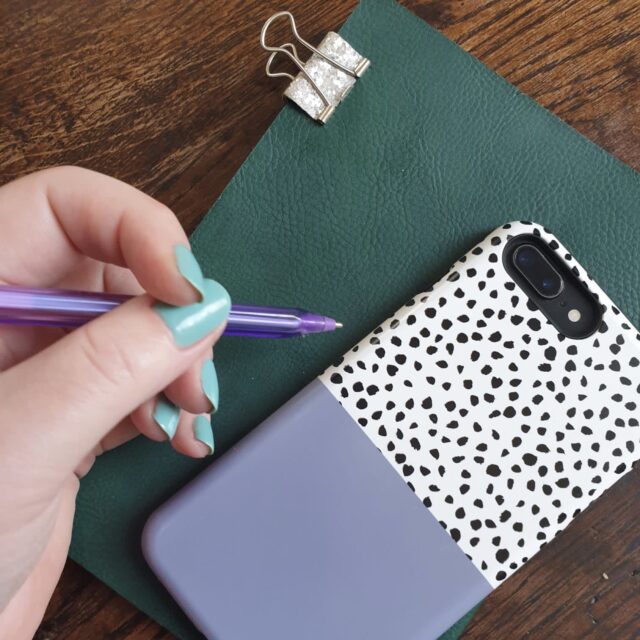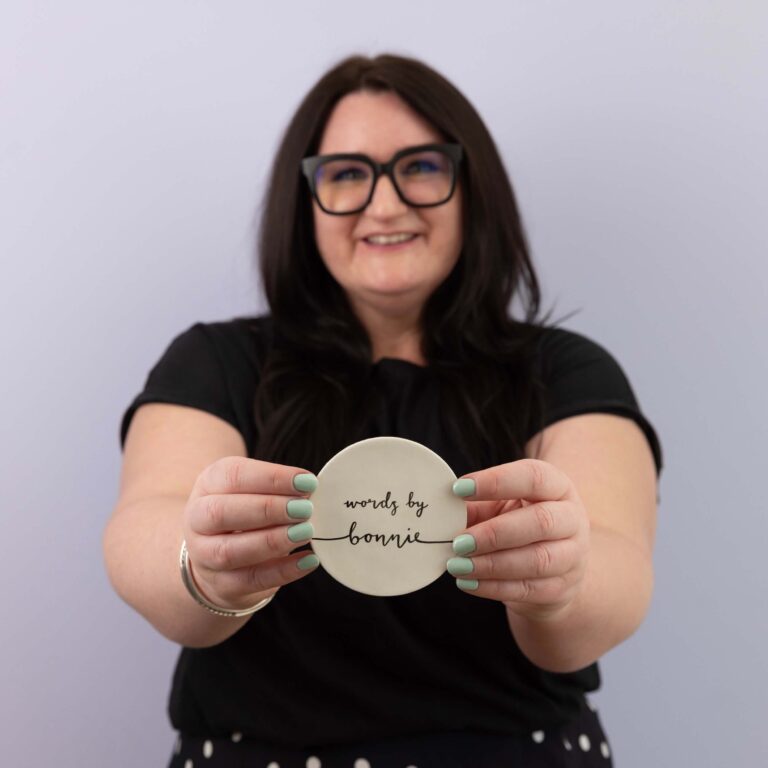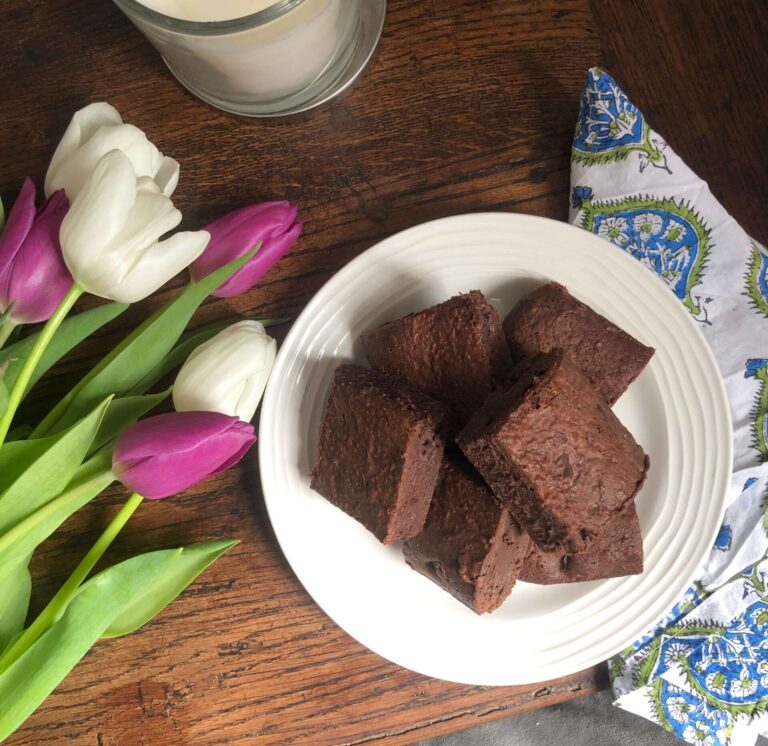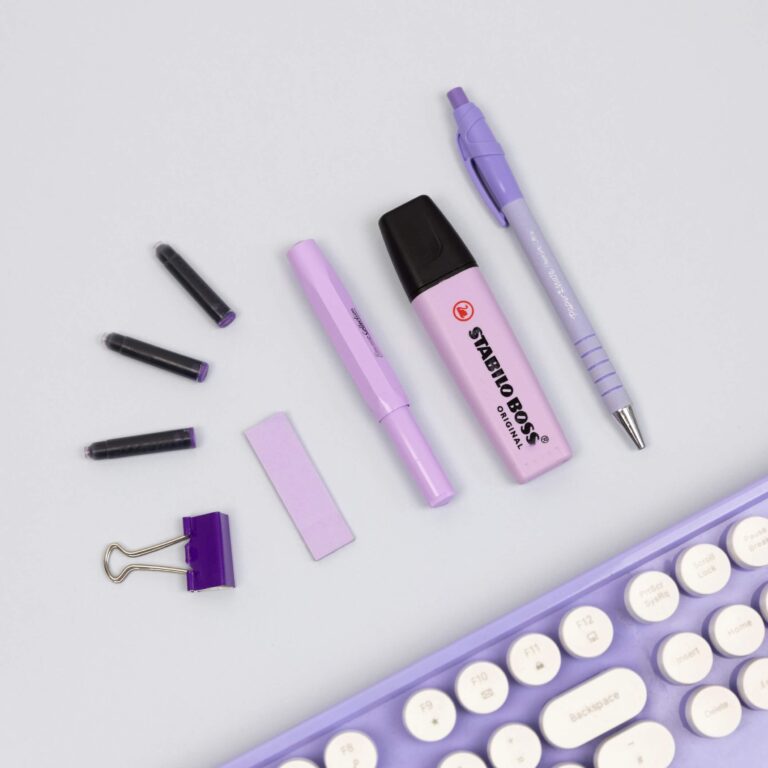This blog is a chonker, so if you don’t have time to read it all now, just click on whichever heading above looks the most interesting.
4 Super Fun (and Easy) Blog Types for Your Small Business
Regularly blogging is a game changer for small business owners.
Amid the overwhelming small biz advice online perhaps you’ve heard that blogging is dead. We live in a world of video and that’s all that matters.
But, that’s just not the case.
Sure, video’s great, but different types of content all have their place. LinkedIn needs outstanding captions, podcasts needs guests, and your small business website needs blogs.
There’s nothing else that will drive website traffic, prove your authority, and help your website rank on Google like blogging. Sure, I’m biased, I’m a word- lovin’ copywriter, but I’m always honest. There’s no disputing it, blogs are marvellous.
The thing is, just because they’re great doesn’t mean they’re easy.
Luckily for you, I’m an expert SEO blog writer for small businesses. I’ve covered four types of fun, easy blogs right here. With a bit of time, you can bash these out and get them up on your website. I’ve even included some SEO- friendly blog titles in each section for you, because I’m nice.

ONE: Three easy blog writing tips for small business owners
Let’s kick off with three super quick tips for any small business blogs.
Tip one: you definitely need a content plan
Taking the time to sit and mind map all your potential blogging ideas is important. It doesn’t need to be complicated. Simply note:
- Topics you’d love to write about
- Questions your audience might have
- SEO keywords you want to rank for
- Products or services you sell
- Seasonal info about whichever season is coming up
- Debunking any myths in your industry
You can even dig out your favourite pen and a brand-new notebook for the occasion. There’s nothing worse than wanting to write, but staring at a blank page, and having tumbleweed in your head. Or worse, having loads of ideas and going around in circles because you can’t pick one. Planning takes all of that away.
Tip two: keep SEO in mind
One of the best things about blogging for small businesses is that it drives visitors to your website. But, your blog needs to be Search Engine Optimised. You need SEO keywords in your headlines and headings (H1/ H2/ H3), body text, URL, and meta data. Do a teeny little bit of keyword research. Semrush, Ahrefs, or Google Keyword Planner are all great places to start.
You should also consider the word count you’re aiming for. The longer your blog, the more confident Google can be that it’s high- quality. Don’t be tempted to waffle on or go off on a tangent just to add words for the sake of it. Keep it sharp, detailed, specific, and at least 1000 words.
Tip three: writer a little author bio and a call to action for the end of your blog
You need a mini bio because some readers will find your blog without knowing who you are. They aren’t necessarily going to start on your home page and then move to your blog. They may google the relevant keywords and Google could take them straight to your blog. They might find it from a social media posts. A pal could send it directly to them. Give the reader a chance to know who you are and what your small business does. A little bio helps the reader trust you and know you’re an expert.
Likewise, one gentle CTA at the end of your blog is really important. It’ll encourage the reader to go to a relevant website page, or to have a look at your services. Keeping your reader on your website and helping them to find out more about you is never a bad thing.
OK, now the basics are out of the way. It’s time to get into the different types of blogs which are perfect for small businesses.
TWO: Easy Fun Blog Type- The Listicle Blog
A listicle is a piece of writing which effectively a big list with explanations. The word “listicle” is a portmanteau. It comes from smushing the words “list” and “article” together. It’s a style made super famous by Buzzfeed.
Here’s an example of a Buzzfeed listicle. It’s called 16 Things You’ll Only Understand If You Love Dogs.
a) Surely everyone loves dogs?
b) It’s mainly adorable Instagram pics of puppers
Good listicles are on topics which are attractive to a wide audiences. They’re also quick to write and ridiculously easy to read. Buzzfeed churn listicles out at a speedy rate and get tonnes of traffic to their website. (Hello advertising revenue…)
They even have a guide for contributors on how to write a great listicle.
How to write a listicle blog for your small business
So, if you’re not Buzzfeed, how can you make a listicle work for you?
First off, consider a topic which links to your business and you can say a lot about. Then, think about lists which are relevant to that topic.
The trick is to get super specific.
Let’s say you’re a residential interior designer. Spend a bit of time researching SEO keywords for a few potential ideas. These can guide you on seasonal spikes, what’s popular now, and which keywords are most searched for. Then, get writing.
Write listicles about:
- Your top 5 local homewares stores
- The 5 best styling hacks in a small kitchen
- The 5 best home interiors accounts on Instagram right now
- 5 primary bedroom trends this summer
It’s always helpful to link to a few different other businesses too. It’s great for SEO. (*Cough* backlinks.)
Once you have your five ‘things’, the blog practically writes itself. The first ‘thing’ on your list is paragraph one, the second is paragraph two, and so on. Six headings, a little introduction, five paragraphs, and BOOM. Aim for around 1000 words, and you’ve got yourself a lovely small business listicle blog.
The Listicle Blog Headline Examples
Every time you see the word “glasses” or a synonym for “glasses” swap it out for a product or service you sell. In fact, make it super specific to what you do and who you do it for. If you can add in a location, even better.
- 10 super easy ways to style your glasses, even if you have a fringe
- My Favourite Five: 5 brilliant blogs/ podcasts/ people to follow who wear gorgeous glasses
- Maintenance is key: 3 things every glasses-wearer needs to know
Listicles TL: DR
Pros of listicle blog
They’re quick and easy to write, fabulous for backlinks, super readable, great for chunking into social media captions, excellent for local SEO when writing about local businesses.Cons of listicle blog
It can be hard to get to a good SEO- friendly word count of 800- 1000 words, because the topics aren’t super in depth.

THREE: Easy Fun Blog Type- The Q&A Blog
This one is my secret favourite because it’s super under-used and is immensely powerful.
A Q&A blog can be in three different formats:
ONE: Use social media to gather questions from your audience and answer them in the blog. Make sure you keep the questions super tight to one manageable topic. So, write something like: “what questions do you have about choosing wedding flowers?”, rather than “what questions do you have for a florist?”. Each question you are asked is then the topic of a paragraph in your blog! For example, ‘how much do wedding flowers cost?’, and ‘how do you know which flowers are in season?’, etc.
TWO: Use social media to ask a question to your colleagues/ other small business owners. Use their answers in the blog and credit them! An example might be “hey freelancers, which are the best organisational tools you use to manage your business?”. The responses might be, “I use a planner and a pen, I’m old school because…”, or ‘I love Trello, because…”, or “I’ve used Dubsado for years, because…”. Each of these are their own paragraph!
THREE: Interview a relevant small business owner and write up their answers in the blog. They can be an expert in your industry or in a complimentary industry. Think graphic designers and photographers; copywriters and website designers; coffee shop owners and everyone. This one’s especially good. You are networking, your interviewee will share your blog with their audience, you both get backlinks, and it’s easy AF to write.
How to write a Q&A blog for your small business
If you’re thinking about the panic of interviewing someone, and somehow writing notes. Have you heard of Otter AI? It transcribes your speech as you’re talking. So, jump on a 30-minute Zoom with your interviewee, click ‘record’ on Otter, and you’re practically done.
A Q&A blog is really easy to structure. Simply have the questions as the subheadings and the interviewee’s answers as the paragraph below.
It’s so easy to turn this into an interview blog series. Keep the formula of questions the same, for example:
- Describe your biz in 20 words?
- Why do you love Bristol?
- What challenges have you overcome?
- What’s a proud business moment you’ve had?
- How do you help your customers/ clients?
- Why do you love your job?
- Where can people find you?
Interview 3, 6, 9, 12 people. Bam, you’ve got a whole bunch of Q&A blogs.
Include relevant SEO keywords in the headings, perhaps lead with a juicy quote in the main headline, and get it on your website. Aim for at least 1000 words, but this style is easier to make longer, and even a two- parter. Easy peasy bloggin’s squeezy.
The Q&A Blog Headline Examples
Every time you see the word “glasses” or a synonym for “glasses” swap it out for a product or service you sell. In fact, make it super specific to what you do and who you do it for. If you can add in a location, even better.
- Interview with an optician: The pros and cons of glasses and contact lenses
- How to know if your varifocal glasses are worth it from a long- time varifocal wearer
- What inspires Bristol glasses designer Lens McSpectacles?
Q&A TL: DR
Pros of Q&A blog
They’re easy to write (especially with Otter), great for location specific SEO, fabulous for backlinks, super readable, excellent for chunking on social media, ideal for fresh content, prime content for sharing online by you and the contributors, AND you align your values with another business’s values. All round good stuff.Cons of Q&A blog
It can be hard to find a relevant interviewee and can be time consuming to set up the interview/ record it.
FOUR: Easy Fun Blog Type- The ‘How to’ Blog
Ok, this type of small business blog needs a little more effort, but, you get more of a reward.
A ‘How to’ blog is exactly as it sounds. You inform your audience how to do something, based on your experience, authority, and expertise. They’re an opportunity to really dig into a myth, or a misconception in your industry. Since the main function is to educate and inform, so you can also explain something step- by- step.
Because there’s so much detail in a ‘How to’ blog, they’re super easy to repurpose. Take snippets to publish on social media in captions and use paragraphs in your newsletter. Share the blog with podcast hosts and ask to discuss the topic in more detail as a guest.
How to write a ‘How to’ blog for your small business
’How to’ blogs are chunky, and typically very detailed, so they take longer to write. But, they’re not hard to write. You’re an expert in your business and industry, so you’ve got lots to share. As long as you’re writing about something you know a lot about, the words are going to flow.
Once you’ve got a strong topic idea, and you’ve done a little SEO research, you’re good to go.
Start by breaking down your topic into the step-by-step actions your audience needs to know. Let’s imagine your blog is ‘How to create chocolate truffles for Christmas’. You might think the first step is “melt the chocolate”, but no. Your first section needs to be ‘what equipment you need’, or ‘how to choose which chocolate to buy’, or perhaps even ‘who these truffles are perfect for’. Think carefully about each step of the process, so your reader feels like you’re holding their hand.
If you want to mention products you sell, position them as a solution to a problem.
For example, imagine you sell outdoors-y clothing. Choose a headline like ‘How to style a practical outfit for a UK festival this summer’. Write each section of your blog with clear instructions on styling an outfit and sprinkle your products throughout.
Aim for around 1500- 2000 words. This shouldn’t be too tricky, there are lots of words in helpful step- by- step instructions.
The ‘How to’ Blog Headline Examples
Every time you see the word “glasses” or a synonym for “glasses” swap it out for a product or service you sell. In fact, make it super specific to what you do and who you do it for. If you can add in a location, even better.
- The number one question my customers always ask me about choosing glasses
- How to know if designer bifocal glasses are worth it
- What do to when your glasses aren’t working- my eight tips for wonky specs
- Red flags when you’re buying chunky framed glasses- how to spot them, and how to avoid them
‘How to’ TL: DR
Pros of ‘How to’ blogs
‘How to’ blogs show your authority, they’re easy to pack with SEO keywords, they’re evergreen content which will be searched for throughout the year/ seasonally, they build trust in your audience, they’re great for social media, and they’re the most helpful content to your audience.Cons of ‘How to’ blogs
‘How to’ blogs are more time consuming to write and are more complex/ detailed.

FIVE: Easy Fun Blog Type- The Personal Blog
This type of blog is great for small business owners. It’s super popular because it allows the writer to explore their unique experiences.
With a personal blog you have a great opportunity to share your values. It’s easier to go into detail about why they’re important to you than on your about page. You could cover how you chose your job, the challenges you’ve faced, your wins, lessons learned, and your goals.
Perhaps you can discuss your feelings about a topic as well as your past. Blogs about why you love or hate something can only be written from a personal point of view.
What’s tricky about personal blogs for small businesses is keeping the content professional. The topic you choose still needs to be relevant and valuable to your reader. Drawing the line between sharing just enough information and not sharing too much can be difficult. This is where a strong edit can really help.
How to write a personal blog for your small business
Having an objective when you start to write your personal small business blog is a good idea. Keep the value to the reader in mind. Your personal blog needs a powerful headline to grab the reader. It could be shocking, it could be impressive, but it needs to be captivating.
Break your story into smaller sections to keep the reader engaged. Focus on the message you’d like to get across. You can fully lean into your authority as you reflect on your experience. This is a powerful way to build confidence and trust in your reader.
The Personal Blog Headline Examples
Every time you see the word “glasses” or a synonym for “glasses” swap it out for a product or service you sell. In fact, make it super specific to what you do and who you do it for. If you can add in a location, even better.
- Sustainability first: here’s how I make sure my glasses don’t cost the earth
- How I became an optician: the highs, the lows, and why I’d never change my job
- The worst advice I was given as a glasses seller and what I did instead
The Personal Blog TL: DR
Pros of the personal blog:
They show off your authority, they’re useful for your audience, and great for repurposing into social media posts. Since they’re about you, they’re pretty easy to write, they can be inspirational, and you can share your values.Cons of the personal blog:
The topics are less likely to be relevant for SEO keywords, and it can be hard to keep it professional
There you go! Four types of blogs for your small business and tonnes of tips to get you going. Check out my blog writing services if you need a bit of extra help with blogging. I’d be delighted to chat all things small business blogs with you over a cuppa.








